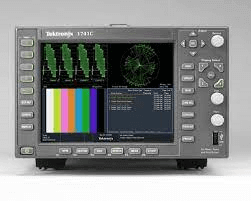What is an Analog Monitor?
Analog monitors were once widely utilized as television displays, are basic color monitors. The cathode ray tubes used to create the monitors were fairly large. They were created in a way that would allow them to accept signals of various frequencies. They are also known as multi-frequency monitors for this reason. Digital monitors, on the other hand, are able to receive digital signals from the video adapter. Before they can present the material on the screen in digital monitors, digital signals must first be transformed into analog signals. Traditional monitors are analog, while some of them employ digital signals to change the displays' many attributes. The accomplishments of Analog MonitorOne of the most prominent monitors was analog or CRT models because they offer a high-quality color display at a lower cost. They dominated the market for many years before LCDs, and flat-screen displays were created in the 1990s. Sales of digital displays surpassed those of analog monitors in a short period of time. Although there were still some benefits to employing analog displays, their use has declined due to the rise of Liquid Crystal Displays and a decline in cost. Benefits of analog monitors
Drawbacks of Analog Monitors
An overview of analog displays' historyThe first Analog Display was monochromatic, with a black backdrop and the ability to solely display letters. Green was used to symbolize the text. In 1981, a vast color palette and high-definition pictures and movies were finally supported by the continuously evolving color technology. When LCDs were eventually released to the market in the 1990s, analog displays offered resolutions of at least 1024 x 768 and an endless color palette. Analog ConnectorsThe system broadcasts a signal that contains all the details of the material that will be shown on the monitor. The format of these signals might either be analog or digital. The signal for analog monitors should be a continuous electric signal or take the form of analog waves. Known as a VGA connection, this kind of connection enables the transmission of this sort of signal. Digital information from the system is transformed into digital signals by a different video adapter in the device. The transformed signals are sent to the monitor. It is frequently found inside the CPU and goes by the name graphic card or graphic adapter as well. After the computer's data has been transformed into analog signals, a VGA connection is used to send the analog waves to the monitor. The system's rear is where the cable is attached. It has 15 pins that are organized into three rows and is known as the D-sub connection. The responsibility for transmitting various display-related data falls on each pin. These are available:
Three distinct lines on the VGA connection are used to transmit the red, green, and blue color signals. Analog monitor applicationsDespite the fact that analog monitor technology has become antiquated. Analog monitors are still used in a variety of ways. The following are some examples of applications for analog monitors: 
Multi-frequency display devices These monitors are capable of showing every channel within a given frequency range. The frequency can be changed by the user within the specified range. Powder metallurgy uses these displays. They are employed in the creation of premium metal powders. The displays built on this theory are very dependable. Other industries, including the food business, can make use of these displays. RGB Monitor Analog signals are employed in RGB monitors because they allow for distinct separation of the red, green, and blue signals. These three hues must be distinguished clearly in order to display seismographic photographs of a region or a field, which are utilized only for this purpose. |
 For Videos Join Our Youtube Channel: Join Now
For Videos Join Our Youtube Channel: Join Now
Feedback
- Send your Feedback to [email protected]
Help Others, Please Share









